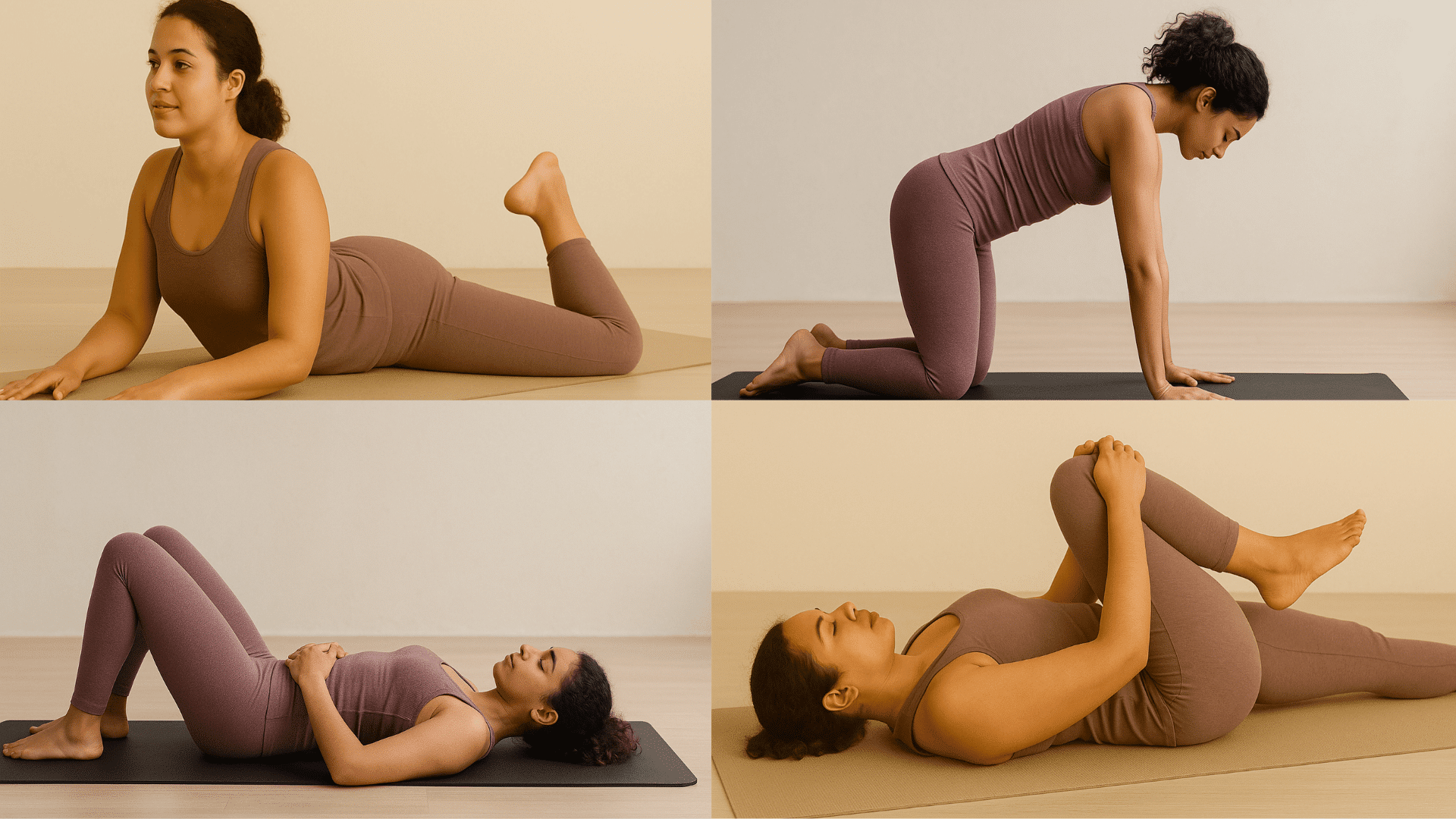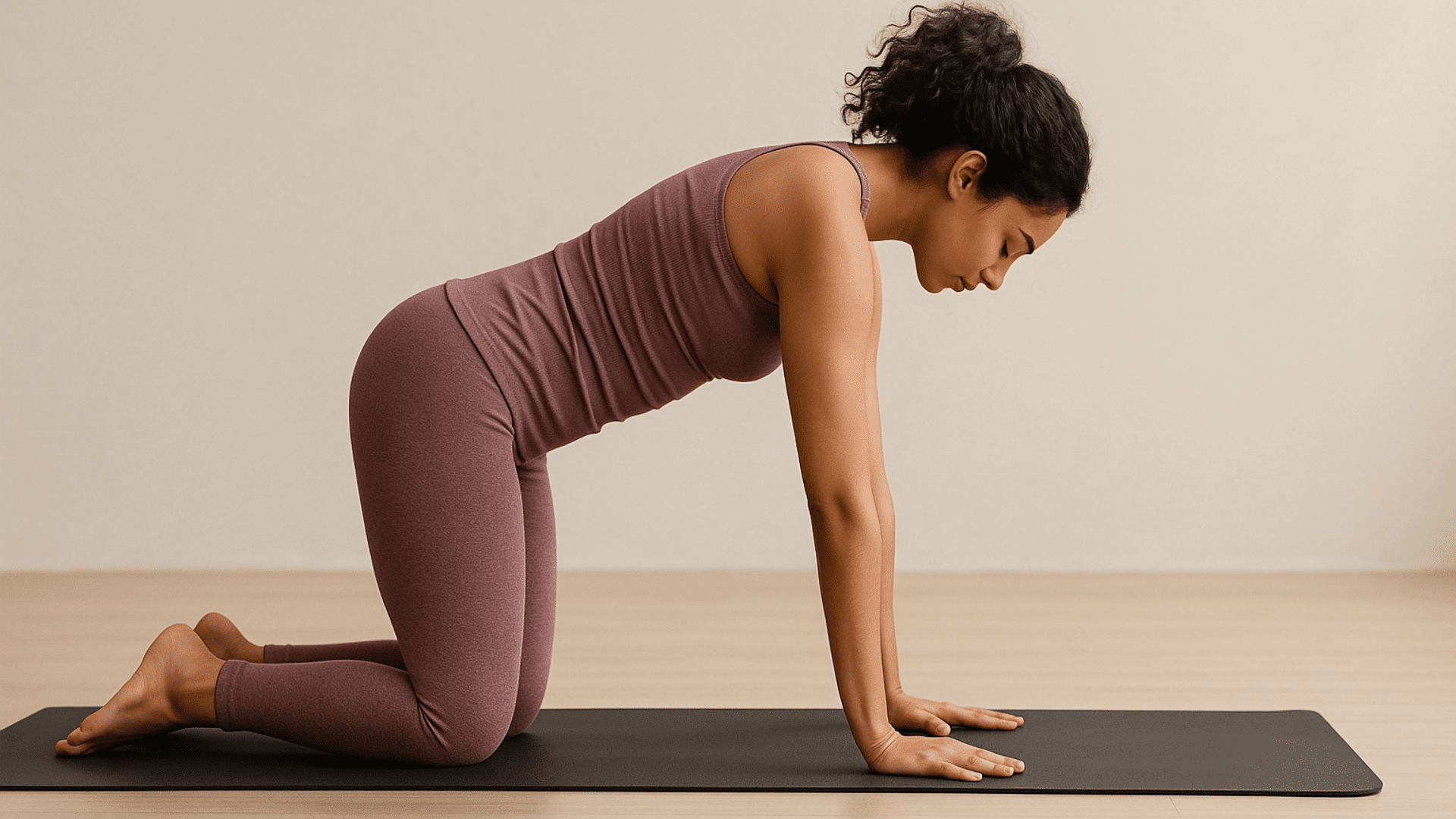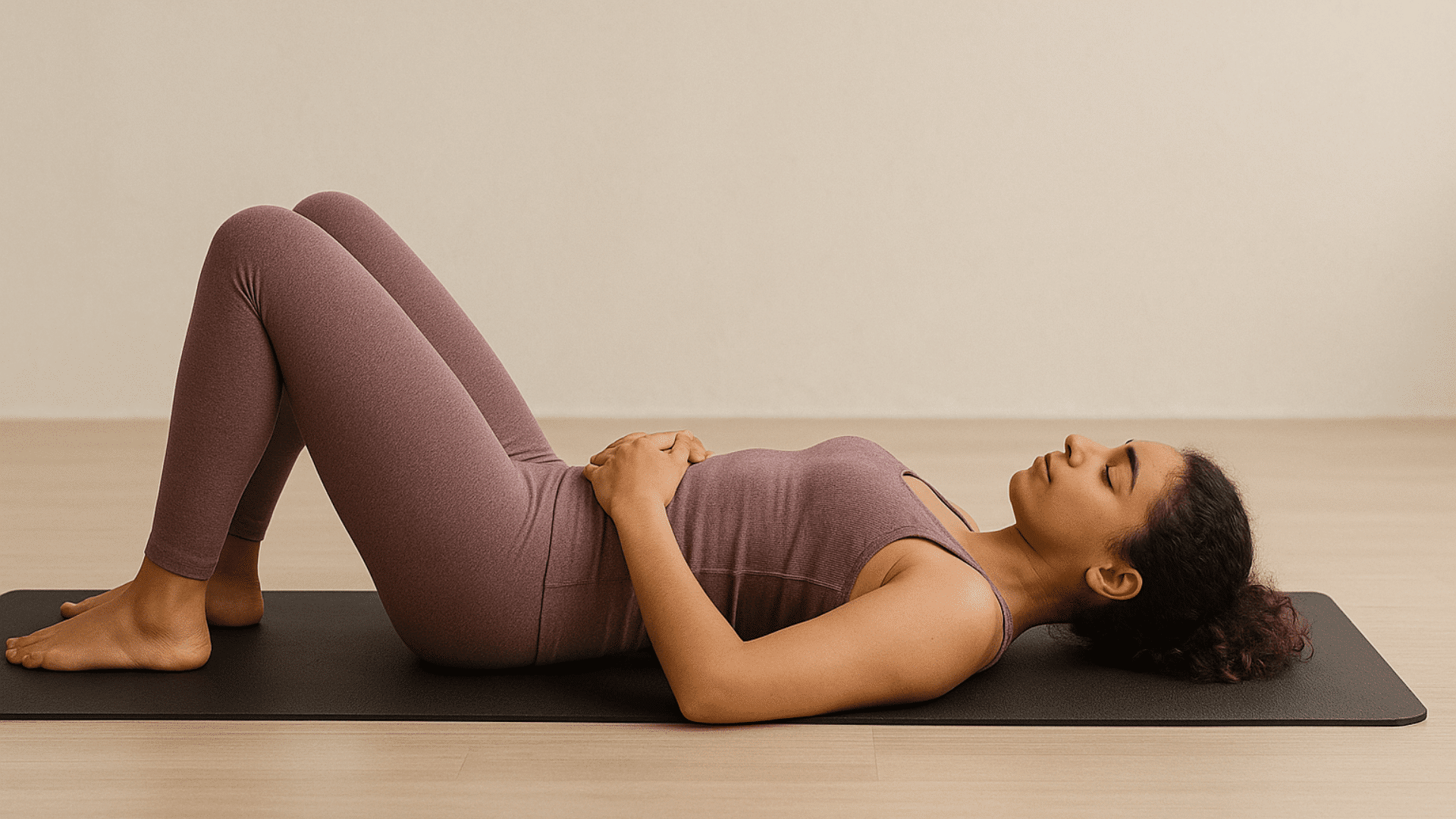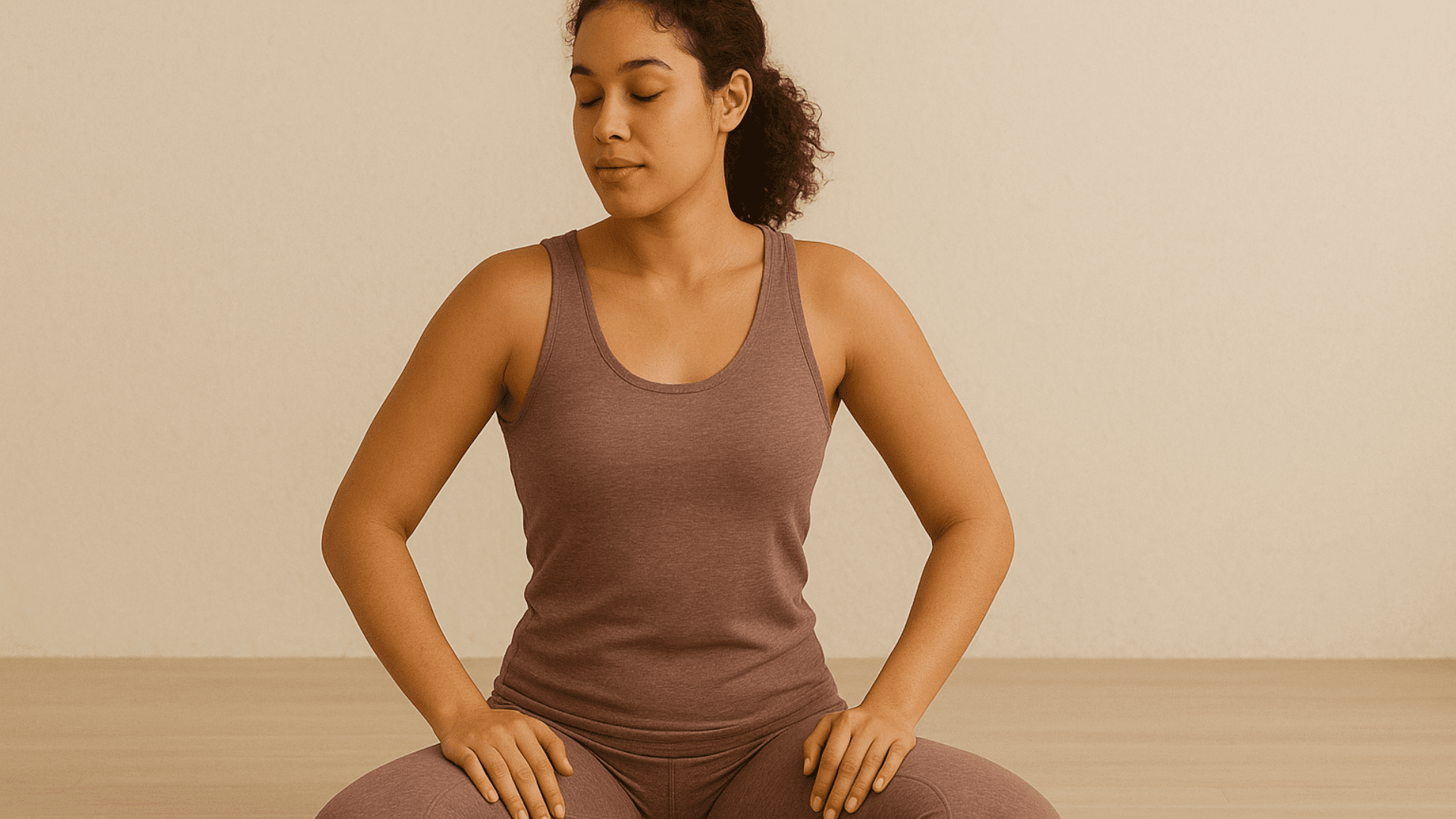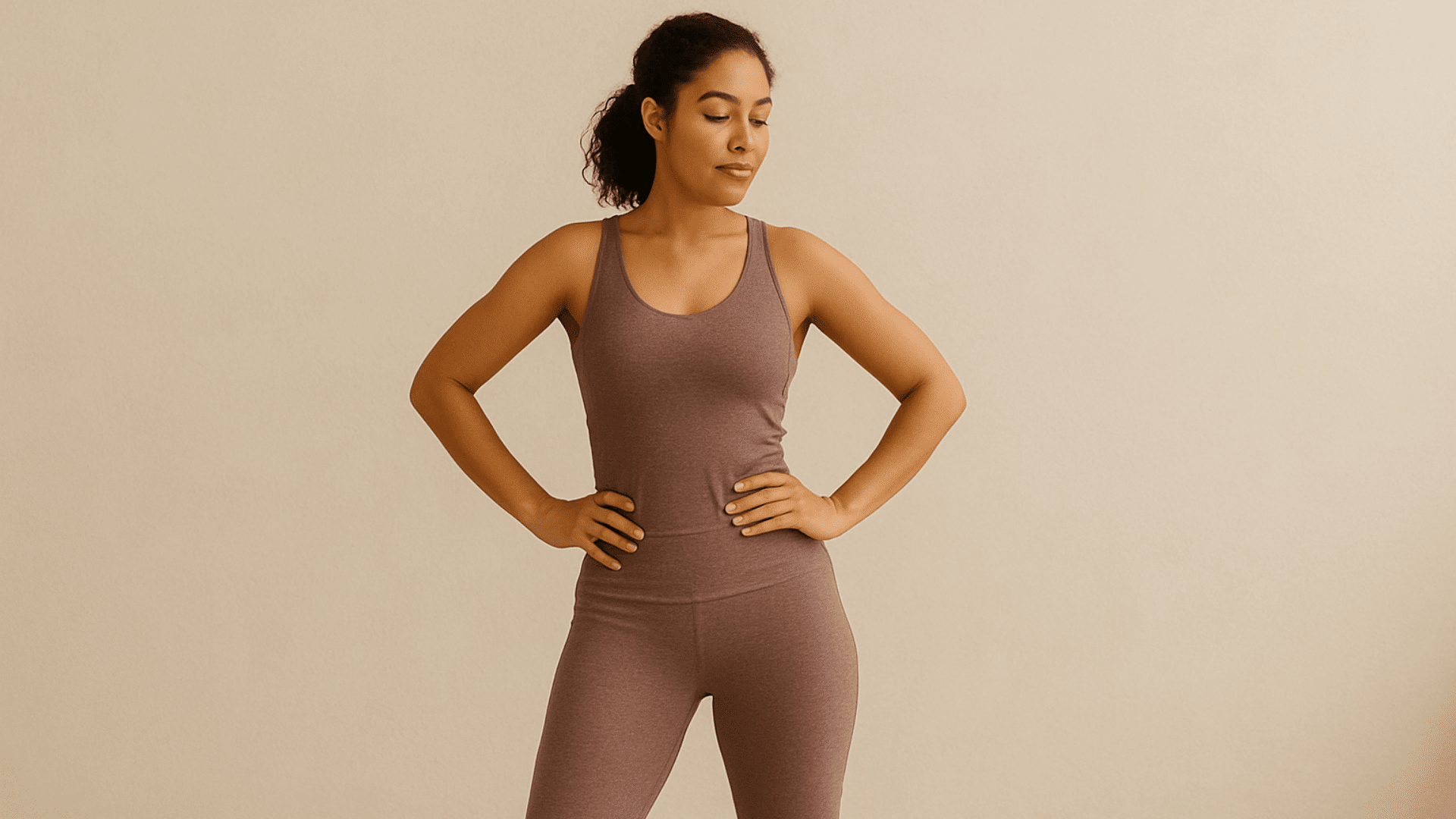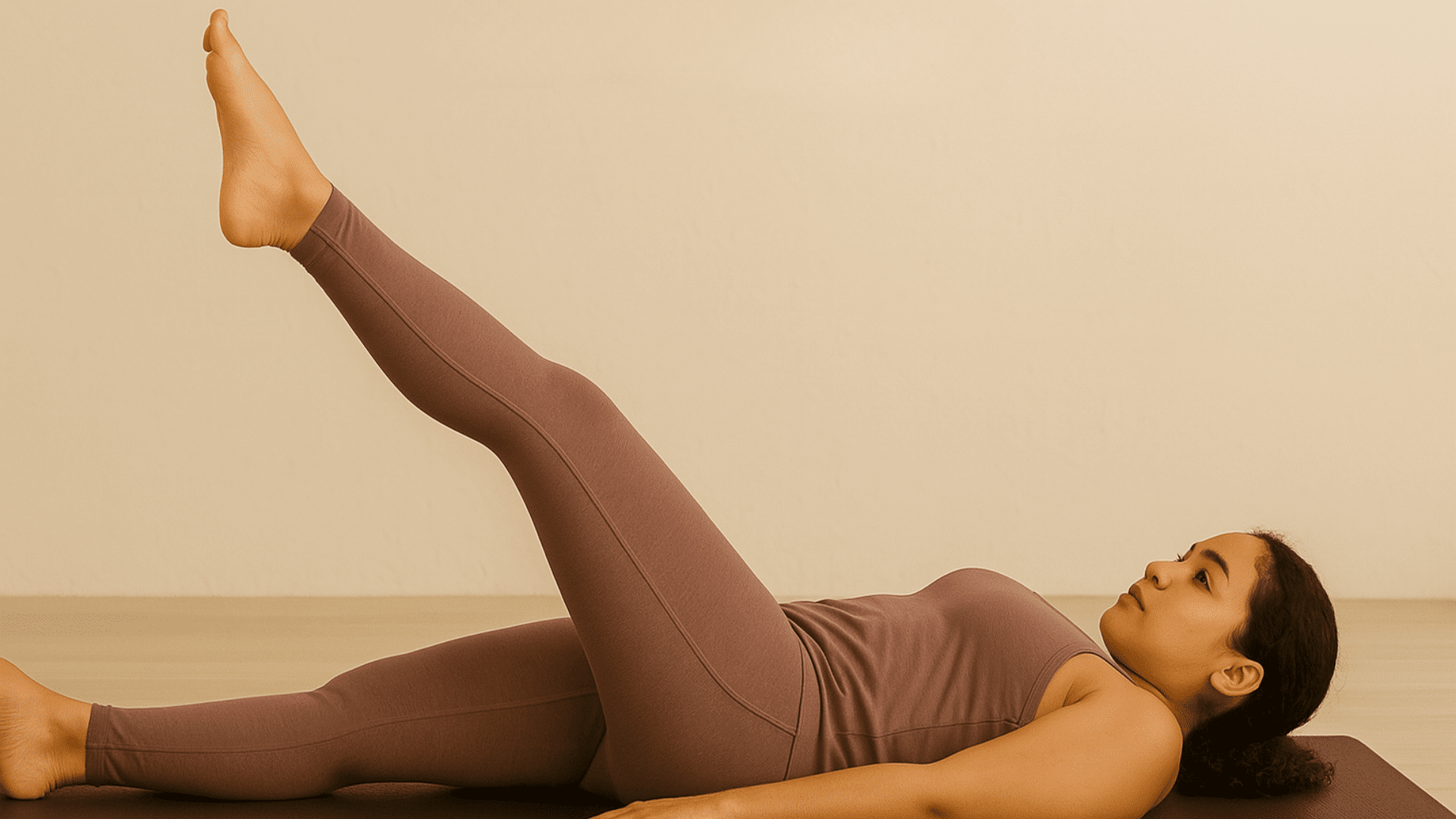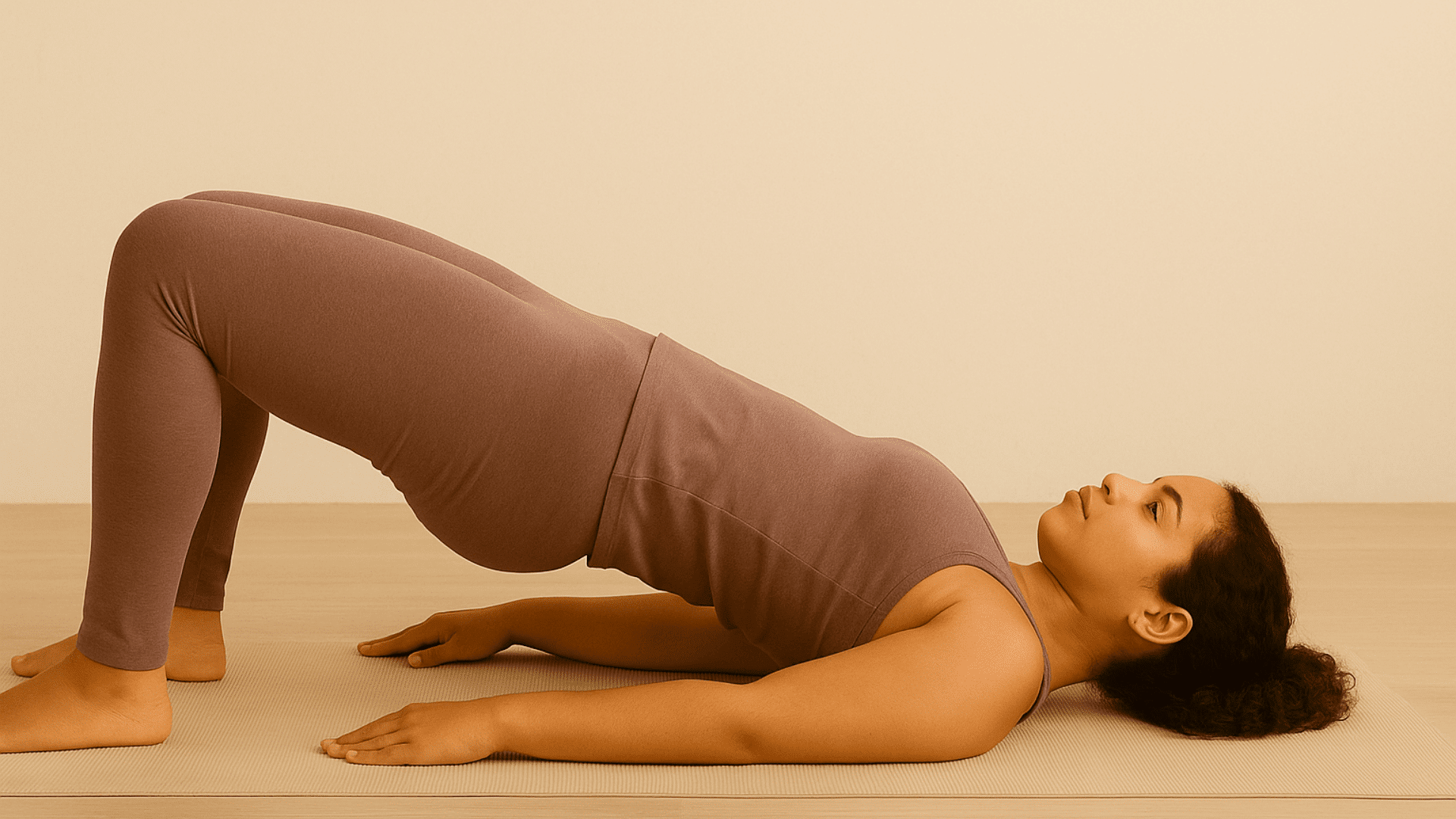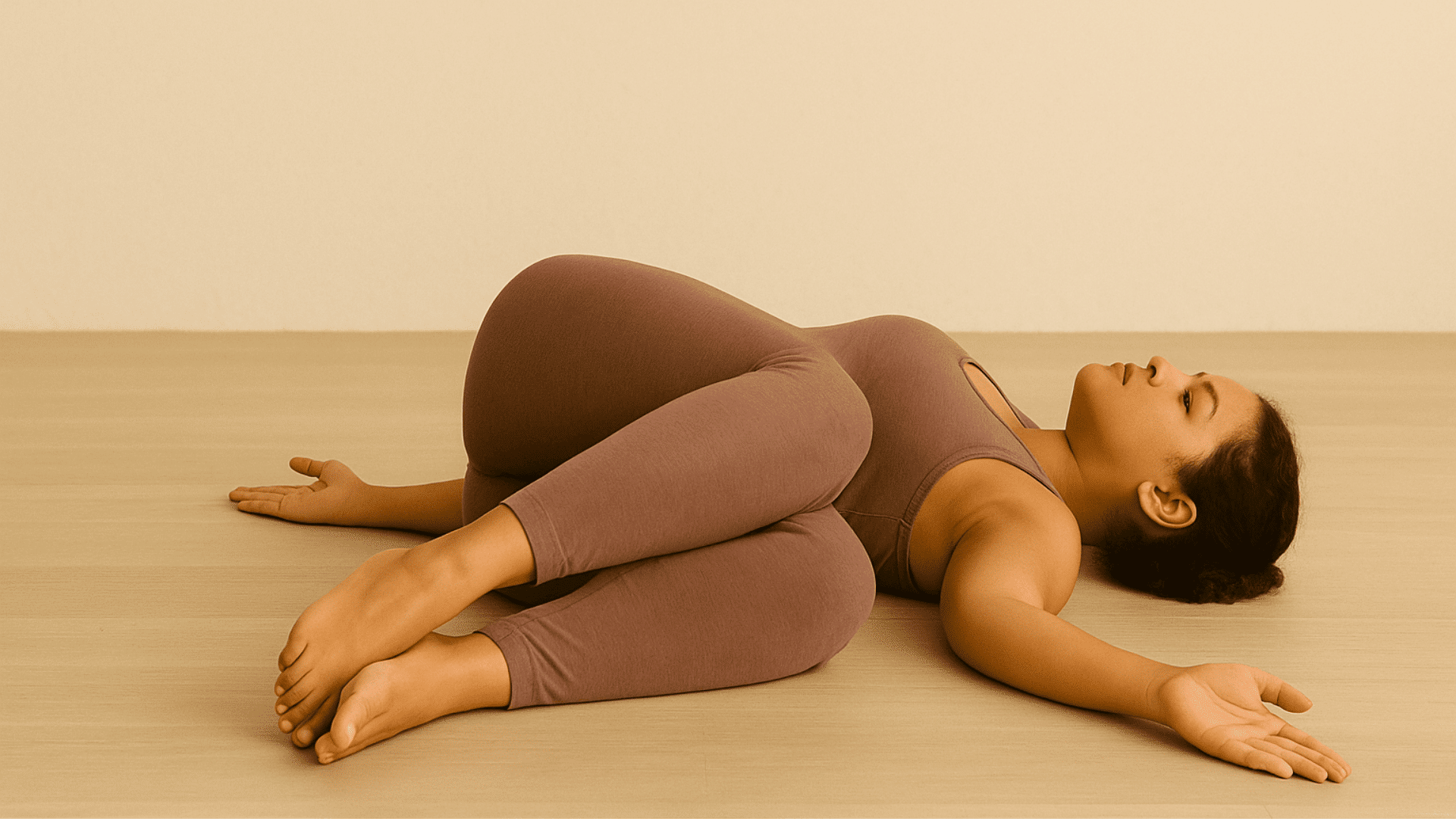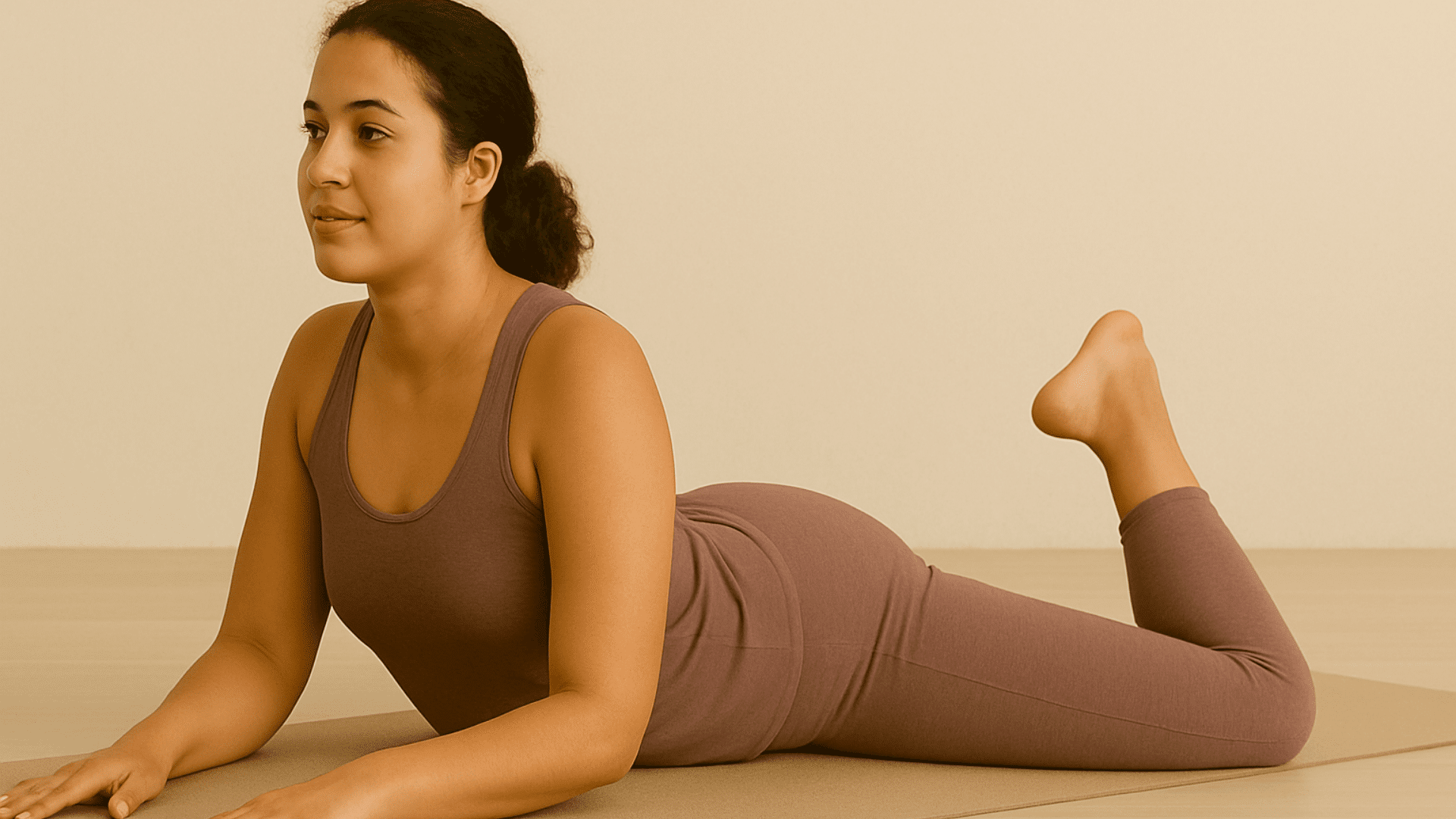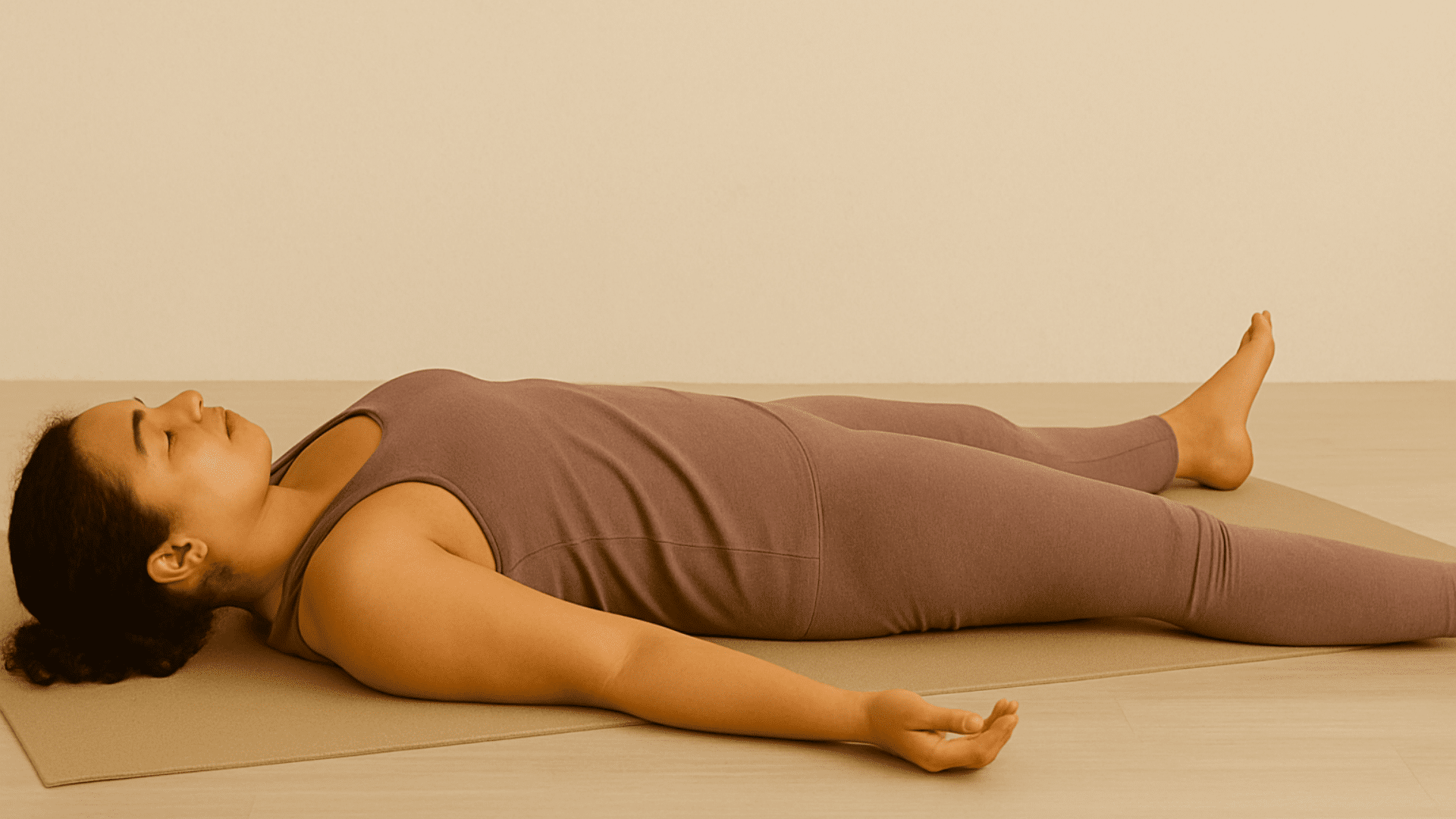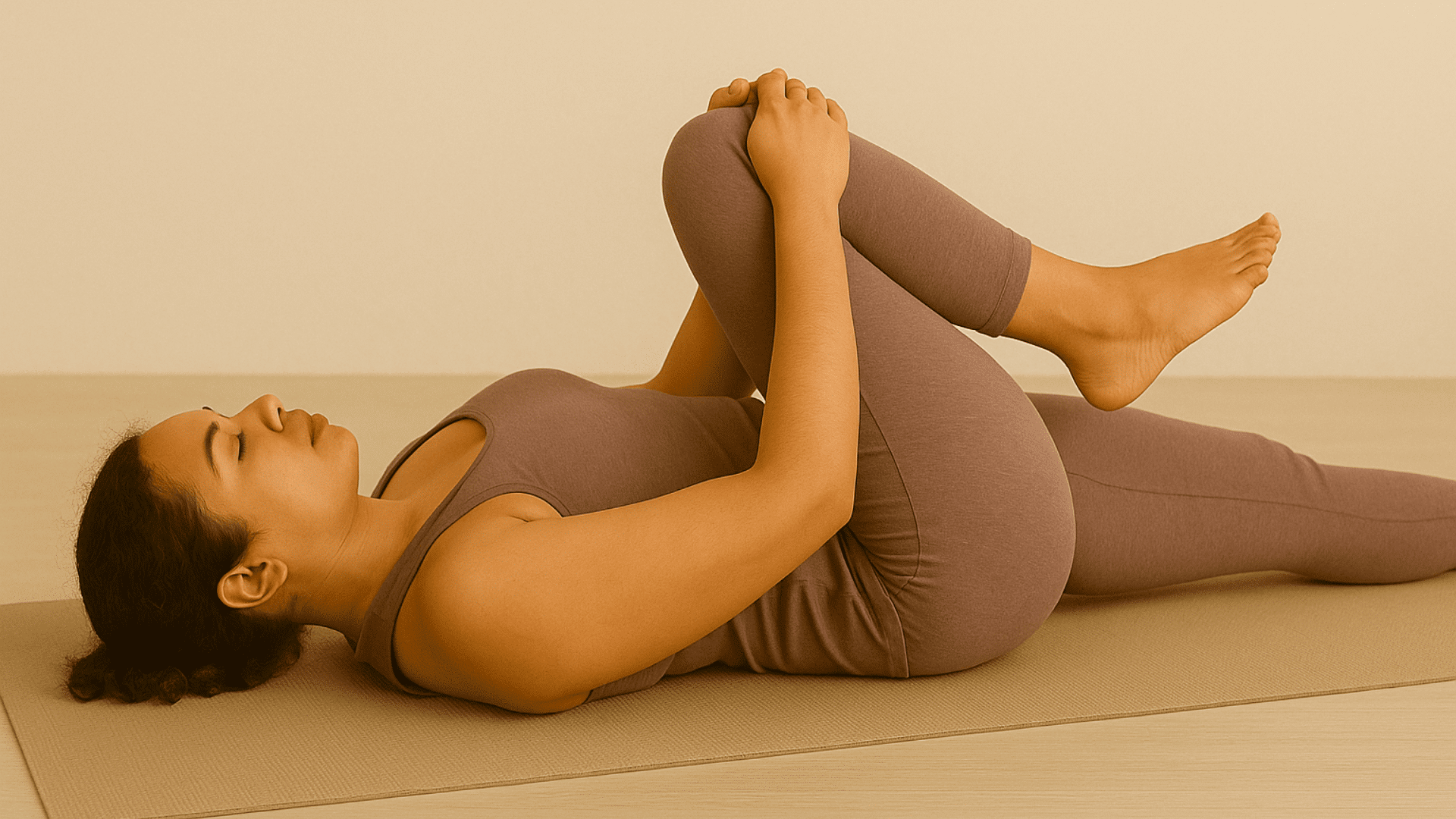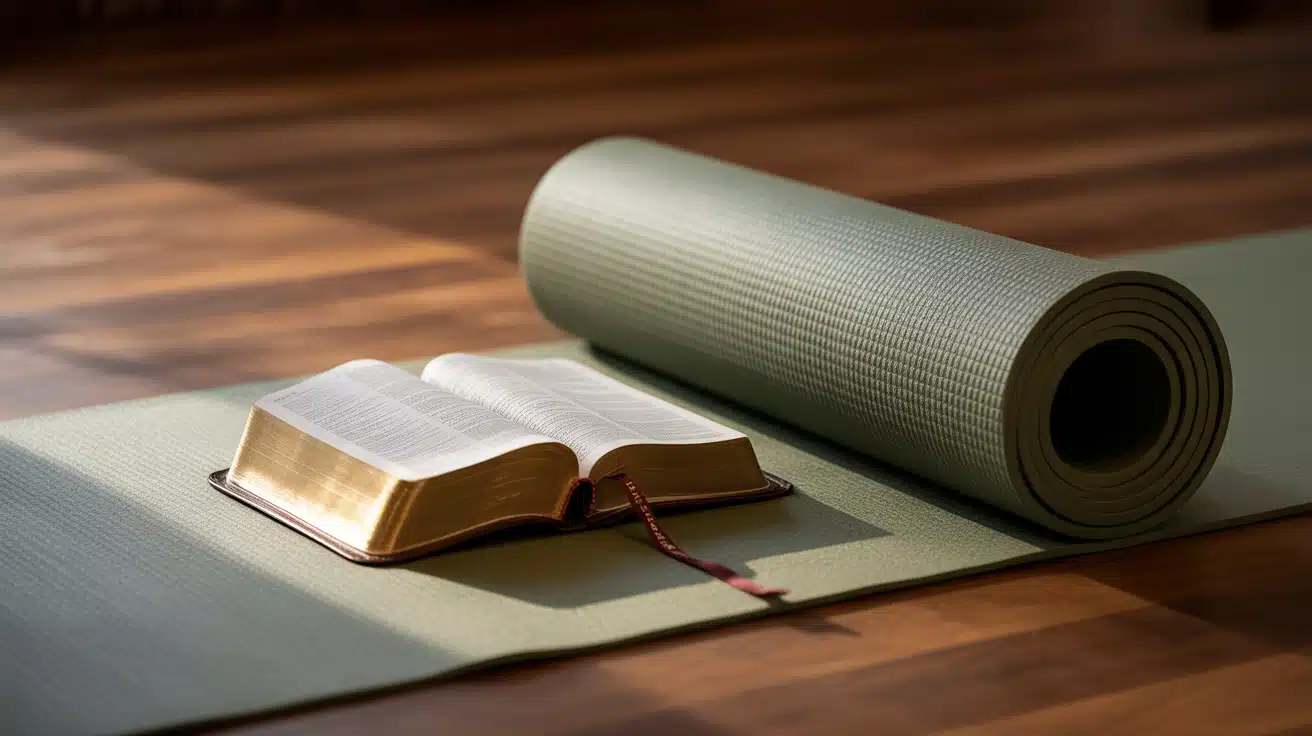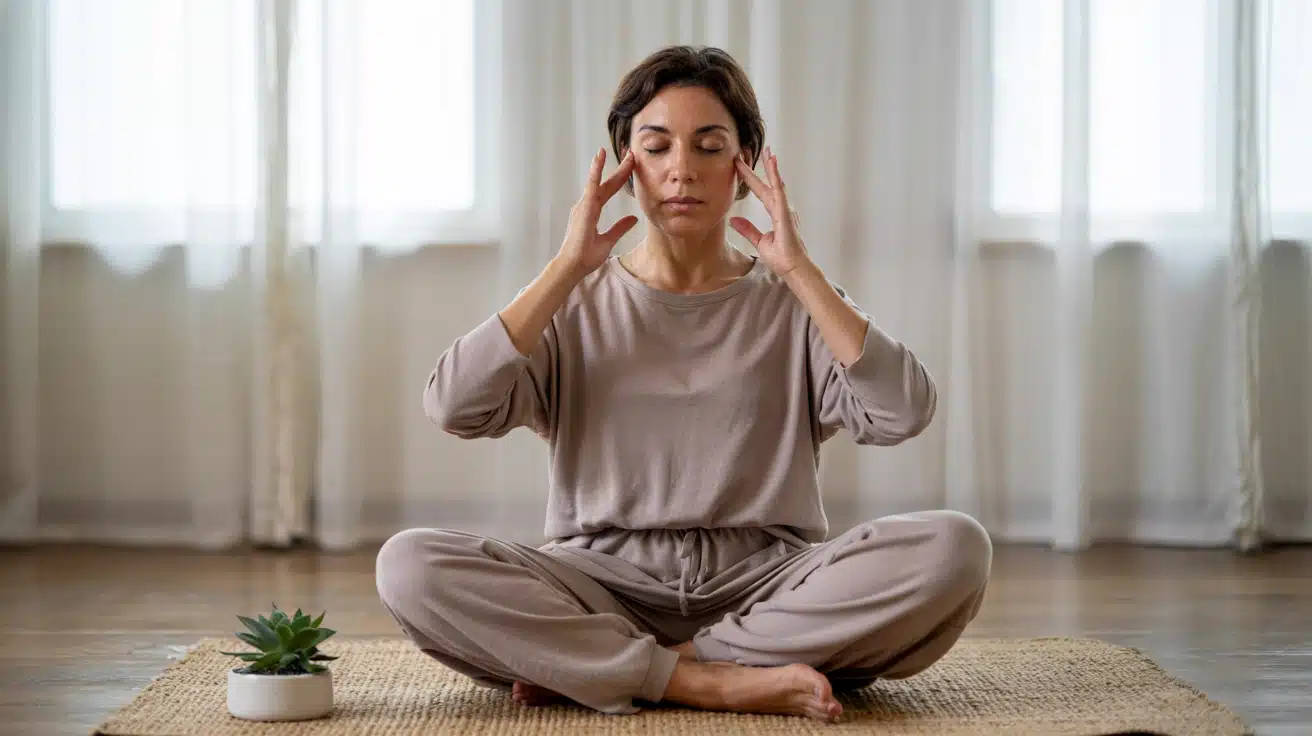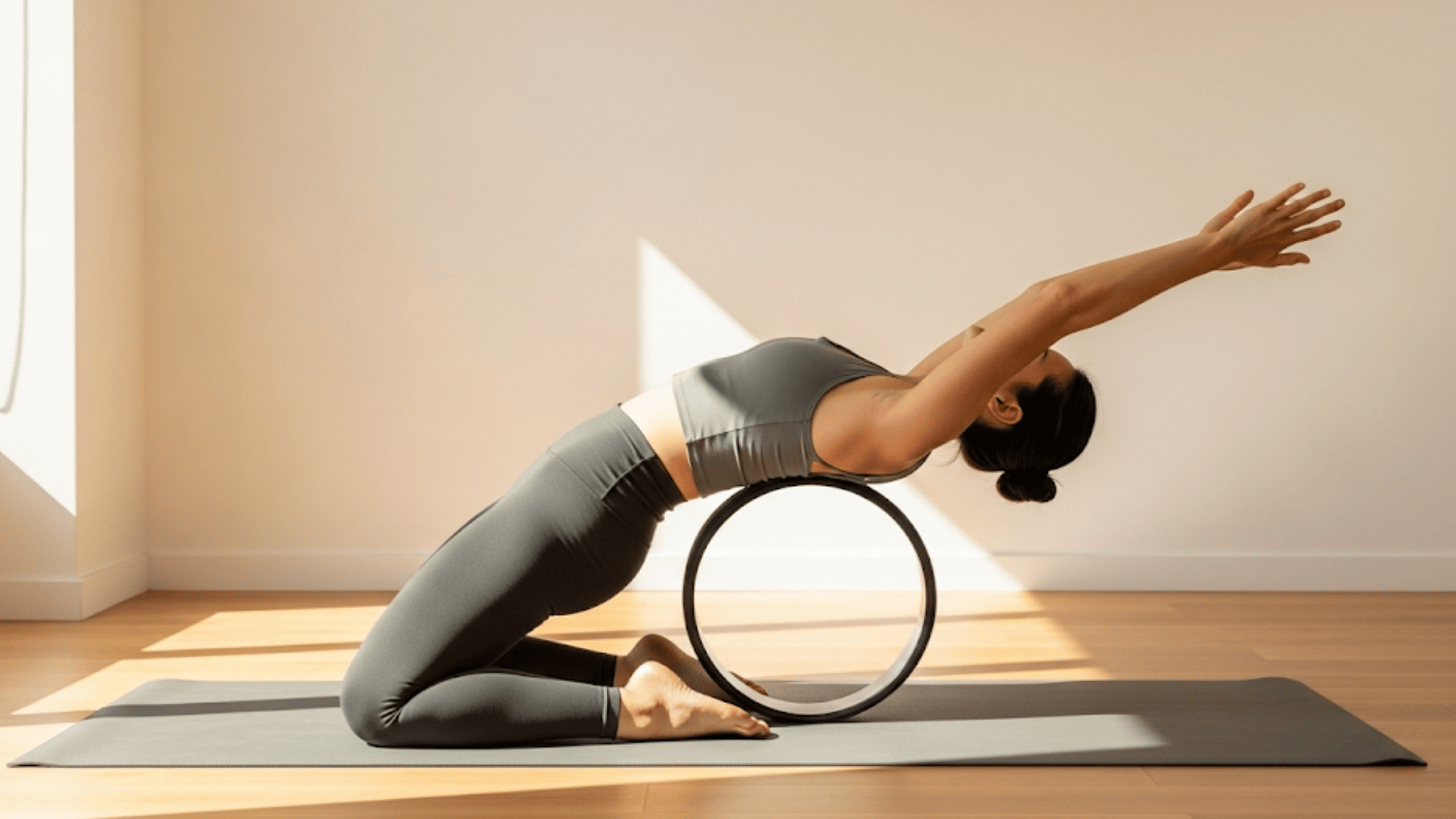Let’s be real; life can be loud, rushed, and full of stress.
Somatic yoga is like hitting the “pause” button.
It’s a slower, gentler kind of yoga that helps you notice how your body feels, not how it looks.
You won’t be forcing big poses or holding long stretches.
Instead, you’ll move with care, connect with your breath, and really listen to your body.
This practice combines yoga poses with mindful movement so you can release tension, calm your nervous system, and feel more at home in your own skin.
It’s peaceful, powerful, and doable for just about anyone.
What Is Somatic Yoga?
Somatic yoga is a gentle style of movement that combines traditional yoga with body awareness techniques.
Instead of focusing on perfect poses, it encourages you to feel what’s happening inside your body.
Movements are slow, mindful, and often small, helping your brain and body reconnect.
This kind of yoga can reduce tension, support healing, and calm the nervous system.
It’s great for people of all ages, especially those dealing with pain, stress, or fatigue.
With somatic yoga, you’re not performing; you’re noticing, adjusting, and moving in ways that feel safe, soothing, and right for your body in the moment.
Principles of Somatic Yoga
Principles of Somatic Yoga
Somatic yoga is all about moving with care, noticing how you feel, and staying present.
It’s a slow, gentle practice that helps you reconnect with your body in a safe, mindful way.
- Move slowly and intentionally so your body and brain can respond and adjust with ease.
- Pay close attention to inner sensations instead of how your pose looks from the outside.
- Use soft, steady breathing to relax your muscles and support the nervous system.
- Avoid pushing through pain or discomfort, honor your limits and stay where it feels safe.
- Take time to rest between movements to allow full release and reset for your body.
These principles make somatic yoga feel calming and supportive, helping you move in ways that truly serve you.
Somatic Yoga Poses
These poses are gentle and focused on what’s happening inside your body.
You’ll often be lying down or sitting, which keeps things easy and relaxed.
No need to rush; go slow, breathe, and feel each move.
1. Cat-Cow Pose
This soft flow warms up your spine and helps you wake up your body gently.
- Start on all fours, hands under shoulders, knees under hips.
- Inhale, arch your back, and look up (cow).
- Exhale, round your spine, and tuck your chin (cat).
- Move slowly, letting your breath lead.
- Feel each part of the spine move.
2. Pelvic Clock
It’s like a mini massage for your pelvis, easy and calming.
- Lie on your back with knees bent and feet on the floor.
- Imagine a clock on your lower belly.
- Gently tilt your hips toward each “hour.”
- Move in a slow circle.
- Go in both directions and notice the feeling.
3. Somatic Shoulder Release
This one melts shoulder tension without doing too much.
- Sit with your arms relaxed by your sides.
- Slowly roll both shoulders forward.
- Then, roll them backward.
- Feel for tight spots.
- Breathe into them and soften.
4. Hip Circles
Helps your hips feel loose and free, great for tight lower backs.
- Stand or sit with feet hip-width apart.
- Gently circle your hips in one direction.
- Keep it smooth and slow.
- Reverse the direction after a few rounds.
- Stay relaxed and breathe.
5. Somatic Leg Lifts
Strengthens and wakes up the legs without straining them.
- Lie on your back with both legs straight.
- Slowly lift one leg a few inches.
- Feel the effort in your hip and thigh.
- Lower with care.
- Switch legs and repeat.
6. Moving Bridge
A slow bridge that builds body awareness and core support.
- Lie on your back with your knees bent.
- Press your feet down and lift your hips slowly.
- Feel each part of your back rise.
- Lower one vertebra at a time.
- Let the breath guide the rhythm.
7. Knee Rock with Cactus Arms
Nice and gentle for your lower back and hips.
- Lie on your back, arms bent like goalposts.
- Bend your knees and place your feet flat.
- Rock knees slowly from side to side.
- Keep your upper body grounded.
- Don’t force it, just move gently.
8. Sphinx Pose and Half Frog
Opens the chest and hips while helping you breathe better.
- Lie on your stomach, elbows under your shoulders.
- Lift your chest slightly and gaze forward.
- Option: bend one knee out to the side.
- Let your belly stay soft.
- Take a few deep breaths.
9. Full Body Scan
This one’s more about stillness. It’s a reset for your whole system.
- Lie on your back with arms and legs relaxed.
- Close your eyes and breathe slowly.
- Mentally scan your body from head to toe.
- Notice how each area feels.
- Stay longer where you feel tight.
10. Half Wind Removing Pose
Super simple stretch that helps with back tension and digestion.
- Lie on your back and hug one knee in.
- Keep the other leg straight on the floor.
- Breathe deeply into your lower belly.
- Hold for a few breaths.
- Switch sides and repeat.
Benefits of Somatic Yoga
Somatic yoga is perfect if you’re dealing with chronic pain, healing from an injury, or just need a slower pace.
It’s also great for beginners, older adults, or anyone feeling stiff or stressed.
Yoga offers gentle yet effective support for both your body and mind.
It’s a slow approach that helps you notice what your body truly needs.
- Eases chronic pain by calming the nervous system
- Builds gentle strength and improves coordination
- Boosts emotional balance and deepens body awareness
- Supports trauma recovery and helps release stress
- Encourages slow, safe movement that feels good
This mindful practice helps you reconnect, find relief, and move with more comfort.
It’s especially helpful during times of stress, recovery, or when your body simply needs a softer approach.
Somatic Yoga vs Other Yoga Styles
So, what makes somatic yoga different from other types of yoga?
In short, it’s slower, gentler, and all about how your body feels inside. Here’s a quick breakdown:
| SOMATIC YOGA | OTHER YOGA STYLES |
|---|---|
| Slow, mindful movement focused on internal sensations. | Often faster-paced and focused on external form or flow. |
| Designed for comfort and nervous system regulation. | It can be intense or structured around physical challenges. |
| Great for all ages, abilities, and injury recovery. | Might require more strength, flexibility, or endurance. |
| Poses are adjustable, with no pressure to “get it right.” | Often emphasizes alignment, posture, or holding shapes. |
| Focused on healing, awareness, and gentle rhythm. | Sometimes goal-driven, fitness-based, or performance-oriented. |
Both types have value. However, if you’re seeking softness, recovery, or emotional support, somatic yoga has you covered.
The Last Line
Somatic yoga isn’t about nailing the perfect pose or pushing your limits.
It’s about moving gently, listening to your body, and finding a little calm in the middle of everything.
Feeling tired, sore, tense, or just a little off?
This practice meets you right there, with no pressure. It’s soft, it’s simple, and you go at your own pace.
Over time, it helps you let go of tension, feel more grounded, and reconnect with yourself.
So grab a mat or even just a cozy blanket, take a deep breath, and start slow.
Your body and your mind will thank you for it.

